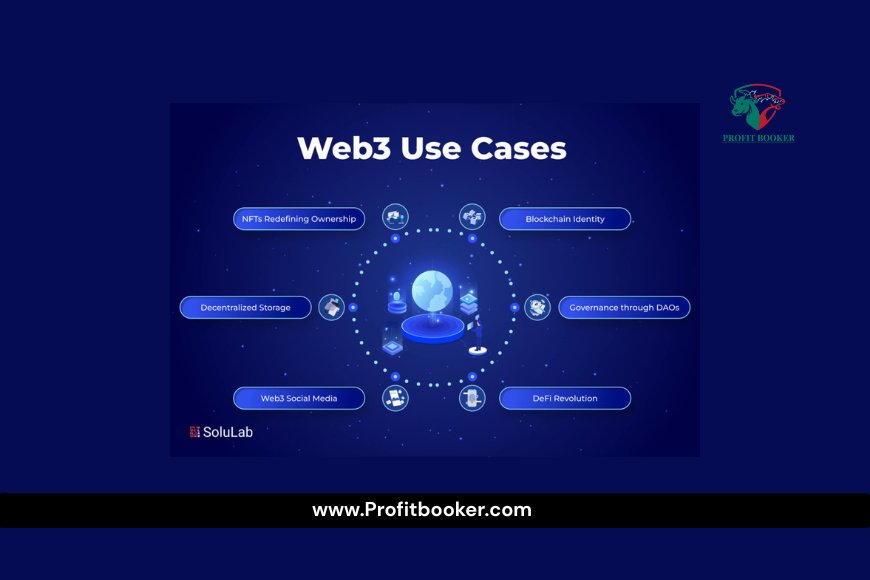What Is Web3? And Why It Will Change the Internet
Web3 is the next big shift in the internet—moving from centralized platforms to a decentralized, blockchain-powered, user-owned digital world. This blog explains Web1 vs Web2 vs Web3, key principles, real-world use cases like DeFi and NFTs, and why it will redefine privacy, ownership, and the global economy. Learn opportunities, challenges, and the future of the decentralized web in simple, beginner-friendly language.

Introduction: The Internet Is Evolving Again
The internet has already gone through two big waves.
-
Web1: simple websites, just reading information.
-
Web2: social media, e-commerce, user-generated content—but controlled by big companies.
-
Web3: the next stage—a decentralized, user-owned internet powered by blockchain.
This blog explains what Web3 is, why it matters, and how it could completely reshape the way we use the internet.
1. From Web1 to Web3: A Quick Journey
-
Web1 (1990s): A library of static web pages. You could only read.
-
Web2 (2000s–today): Interactive platforms like Facebook, YouTube, Amazon. We can create, share, and interact—but big corporations own everything.
-
Web3 (the future): Built on blockchain. Here, users own their data, digital assets, and identity.
Think of it this way:
-
Web1 = reading.
-
Web2 = reading + writing.
-
Web3 = reading + writing + owning.
2. Core Principles of Web3
Web3 is more than just technology. It’s about changing control.
-
Decentralization: No single company runs the show.
-
Ownership: Your data, assets, and identity belong to you.
-
Trustless & Permissionless: No gatekeepers—anyone can join.
-
Token Economy: Participation is rewarded with tokens/cryptocurrency.
-
Interoperability: Apps and platforms can connect across blockchains.
3. How Web3 Works (Made Simple)
If Web2 runs on servers owned by companies, Web3 runs on blockchains—networks powered by thousands of computers worldwide.
-
Smart Contracts: Digital rules written into code.
-
dApps (Decentralized Apps): Apps without a central owner.
-
Digital Wallets: Act like passports—your money, identity, and login combined.
Example: Instead of logging in with Google or Facebook, you log in with your wallet—and only you control it.
4. Real-Life Use Cases of Web3
Web3 isn’t just theory. It’s already changing industries:
-
DeFi (Decentralized Finance): Borrow, lend, and send money without banks.
-
NFTs: Digital ownership of art, music, game items, or even tickets.
-
DAOs: Internet-native organizations run by communities, not CEOs.
-
Gaming: Play-to-earn models give players real value.
-
Identity & Supply Chains: Safer verification and transparent tracking.
5. Why Web3 Will Change the Internet Forever
Here’s why experts say Web3 is revolutionary:
-
Power Shift: From corporations to individuals.
-
Ownership Economy: Creators earn directly from fans, not platforms.
-
Privacy First: You decide what data to share.
-
Global Access: Anyone with the internet can join the new economy.
-
Innovation: Token economies, borderless payments, digital communities.
6. Opportunities for Businesses & Creators
Web3 creates new business models:
-
Launch NFT collections or token-based communities.
-
Raise funds via crypto-based crowdfunding.
-
Build immersive experiences in the metaverse.
-
Sell directly to fans without middlemen.
7. Challenges & Criticism of Web3
It’s not perfect.
-
Scalability: Slow and expensive transactions.
-
Energy Use: Though improving with eco-friendly solutions.
-
Complexity: Wallets, private keys, and crypto still confuse new users.
-
Scams & Speculation: Risky for beginners.
-
Regulation: Governments are still figuring it out.
8. Web3 vs Crypto vs Metaverse (Clearing Confusion)
-
Web3: The decentralized internet itself.
-
Crypto: The money powering Web3.
-
Metaverse: Digital worlds built on Web3 principles.
Together, they form the next digital economy.
9. The Future of Web3: What’s Next?
-
We’re still in the early days (like the internet in the 1990s).
-
Big players (Meta, Google, Microsoft) are entering Web3.
-
Hybrid models (Web2 + Web3) will appear first.
-
In the next decade, expect new jobs, businesses, and communities powered by blockchain.
Conclusion: The Internet Belongs to Us Again
Web3 isn’t just a tech upgrade—it’s a paradigm shift.
-
For users: more control, ownership, and privacy.
-
For businesses: new opportunities and direct customer connections.
-
For creators: more freedom and fair rewards.
We’re still early, but one thing is clear: Web3 is redefining the future of the internet.




